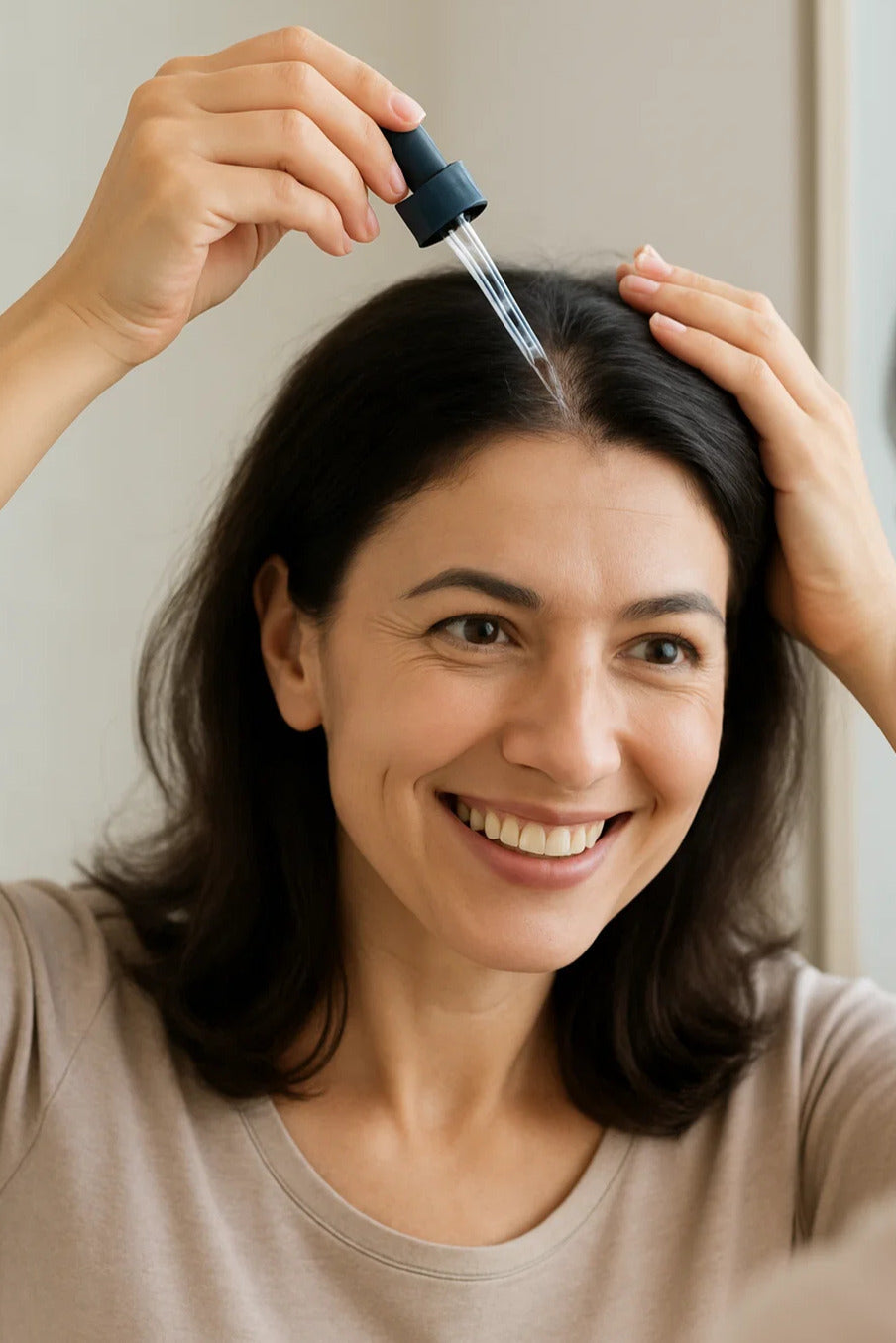
Scalp skinification – a new way to achieve healthy, younger hair
Buy now
Hair skinification – a new trend in hair careNew trends are constantly emerging in the world of cosmetics, but only a few truly transform our approach to skincare. One of them is hair skinification – treating the scalp with the same care we've been devoting to facial skin for years.
Why now?
The pandemic and salon closures have led more and more people to take care of their hair at home. Interest in active ingredients has increased, as have expectations for products. Consumers want to know what works—and see results.
Along with this trend, technologies known from dermocosmetics have moved into hair care. Today, hair products do more than just cleanse and smooth—they are also meant to moisturize the scalp, soothe irritation, regulate sebum production, strengthen hair from the roots, and even support the scalp's microbiome.
What does this have to do with the Ethne serum?
A lot. Applied directly to the scalp, Ethne Serum works where it all begins – in the hair follicle. It contains a specialized peptide that – similar to peptides used in anti-aging cosmetics – stimulates specific cells to function.
In the case of facial skin, these are fibroblasts that produce collagen and elastin. In the case of Ethne Serum, these are melanocytes, the cells responsible for producing melanin, the natural hair pigment. The result? New hair can regain its natural color, without the use of dyes or artificial pigments.
Additionally, the serum has a strong antioxidant effect, supporting the protection of hair follicles from oxidative stress, which weakens follicles, accelerates graying, and worsens the overall condition of hair. It's not just care—it also provides targeted stimulation and biological protection.
How is the effectiveness of products checked?
Laboratories use advanced research methods that allow for an objective assessment of the effectiveness of trichological products. Here are some of them:
Measuring the detangling power of hair (wet and dry) – allows you to assess the effect of conditioners and masks on smoothing hair and its susceptibility to damage.
Tests for brittleness and the number of split ends – show whether the product strengthens the hair structure and protects against mechanical damage.
Hair shine and volume analysis – allows you to measure the visual effects of hair care, such as shine, light reflection, or increased volume.
TEWL (transepidermal water loss) measurements – indicate the condition of the scalp's protective barrier.
Analysis of sebum levels and scalp hydration – crucial in case of problems with oiliness or dryness.
Trichoscopy – assessment of hair density, structure, and life cycle using a camera or dermatoscope.
Additionally, in studies of more advanced products – such as those that treat graying or hair loss – the following are also used:
TrichoScan™ – a digital tool that analyzes the hair growth cycle (anagen/telogen), density, and thickness. It also allows for the assessment of the percentage of gray hairs on the scalp. This helps quantitatively measure treatment effectiveness, for example, by comparing the number of pigmented hairs before and after treatment.
Headscan® – advanced 3D imaging technology that enables precise scanning of the scalp and hairline, including detecting changes in melanin content. Used in anti-graying studies and to evaluate the effectiveness of products that stimulate hair follicles to re-produce pigment.
These modern methods enable objective evaluation of the effects of products such as Ethne Serum. They allow us to confirm the effectiveness of peptides and monitor the reduction of gray hair and overall hair condition improvement over time.
What does this mean for you?
When choosing hair care products—especially those that promise to restore color, reduce graying, improve density, or nourish hair follicles—pay attention to whether the manufacturer provides research results. In an age when almost every product claims to "regenerate" and "moisturize," credibility matters. It's important to distinguish clinical trials from so-called consumer tests—the latter are based on subjective user opinions, while clinical trials utilize objective, measurable research methods and equipment.
Therefore, whether the manufacturer provides results from instrumental measurements (e.g. TrichoScan™, Headscan®) is crucial when assessing effectiveness.
A good serum is not only a marketing effect, but often the result of many years of research, testing with human participants, and measurements using specialized devices.
The future of hair care isn't just about appearance—it's about the health of your scalp, because it determines how your hair grows. And thanks to modern ingredients like peptides and antioxidants, you can now act wisely and effectively—without dyeing and without compromise.
Example of image processing to quantify grey hair.


